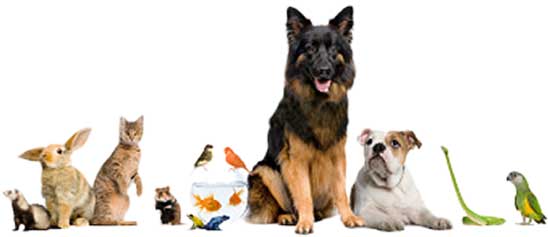Video Courtesy of Americans for Medical Progress
Environment
Within an animal facility, environmental conditions such as temperature, humidity, light, noise, and air exchange are regulated and evaluated for proper level and consistency. The animal's environment affects the animal's health, and therefore, potentially affects the outcome of a study in which they are participating as a model. Control of environemtnal variables ensures that laboratory animals are provided with the stable living conditions necessary for well-designed research projects. A consistent environment in rooms and cages is important in research facilities. Animals housed outdoors must receive protection from heat, cold and other environmental extremes.
Two terms commonly used to describe animal house are conventional and barrier. In conventional rooms, no special precautions are taken to prevent the introduction of disease into the colony. You house your pets in a conentinoal facility - your house. You feed them, groom them, and vaccinate them against common diseases, but, you don't keep them in a special room or pen to isolate them from the rest of their environment. Most of the larger laboratory animals, such as dogs, cats, pigs, and sheep, are housed in conventional cages and rooms.
Barrier housing involves special cages and procedures, like sterilizing the bedding and passing the room air through special filters. A barrier can be a cage, a room, or even an entire facility. The object is to guard against infection or, if the protocol involves the study of diseases that infect humans or other animals, to keep the disease-causing organism from getting out.
Caging
Since many animals spend most of their lives in cages, these enclosures are an important aspect of their environment. Cages must provide the animals with comfort and safety. The animals must be able to move freely within them and have access to clean food and water. Placing too many animals in a cage or using cages that are too small causes stress in the animals. Such stress can affect the animals physiologically and behaviorally, and can alter reserach data.
Bedding
There are generally four definable and achievable levels of sanitation in an animal research facility:
Cleaning: The completet removal of all visible soil from a surface.
Sanitization: The process by which the number of bacteria and other organisms living on inanimate objects is reduced enough to prevent disease. Sanitization does not necessarily totally eliminate all microorganisms, but, is aimed at reducing total numbers of organisms.
Disinfection: A more intense form of sanitation which is designed to reduce to a harmless level the number of a specific type of organism, specifically pathogenic organisms (but not necessarily spores), on an object.
Sterilization: The process of rendering an object totally free of all living organisms, including spores.
The Animal Welfare Act regulations set minimum cleaning standards for cates, feeders and water bottles used for many laboratory animal species. Regular sanitization of racks, feeders, watering devices and other pieces of equipment keeps them clean and contamination-free.
Environmental Enrichment
Environmental enrichment is an attempt to reduce stress in laboratory animals by allowing them to do the same sorts of things they would do if they were living in the wild. The Guide for the Care and Use of Laboratory Animals refers to environmental enrichment as behavioral management, and divides this management into three categories:
Structural environment consists of components of the primary enclosure, such as resting boards or perches.
Social environment consists of contact with other members of the same species, either direct or by sight, sound, or smell.
Activity includes exercise, exploration, and social interaction with handlers.
Enrichment can be as simple as providing frogs in a tank with a piece of plastic pipe in which to hide, or providing paper material for mice to build a next. Housing compatible animals of the same species together in the same enclosure is considered a very desirable method of providing the opportunity for species-typical behavior, such as grooming and mating, in species that normal live in groups.









